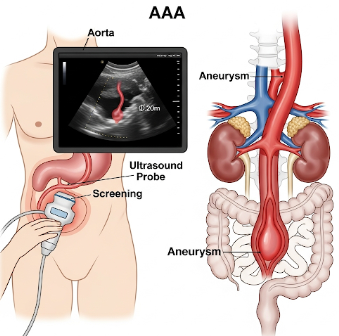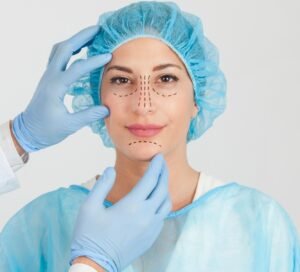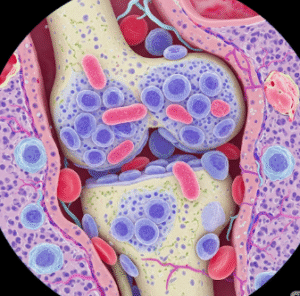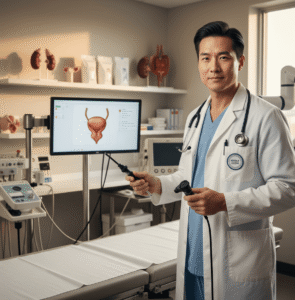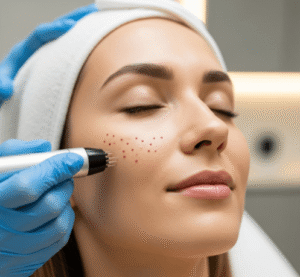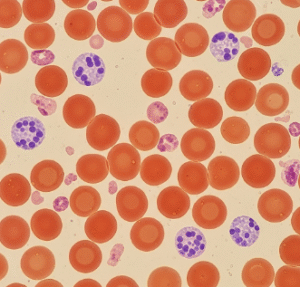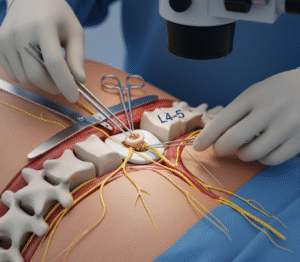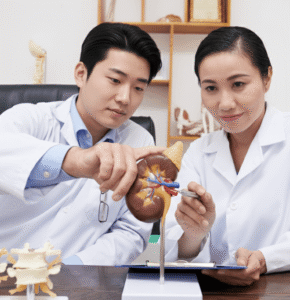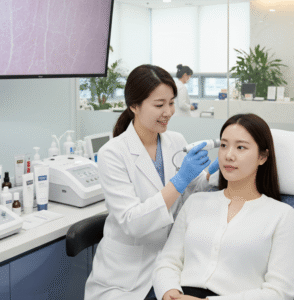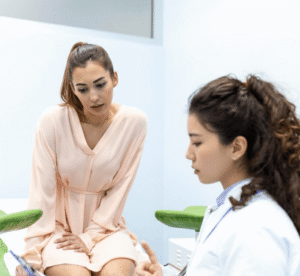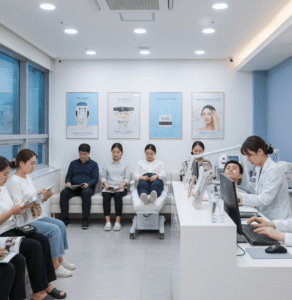What It Is
An abdominal aortic aneurysm (AAA) screening is a specialized test designed to detect whether a person has an enlargement (aneurysm) in the abdominal aorta, the largest artery in the abdomen. The abdominal aorta supplies blood to the lower half of the body.
When the wall of the abdominal aorta weakens, it can bulge or balloon out. This is called an aneurysm. If the aneurysm ruptures, it can lead to life-threatening internal bleeding. Unfortunately, AAAs often grow silently without noticeable symptoms, making early detection critical.
Screening typically uses an ultrasound scan, which is quick, painless, and non-invasive. The goal is to identify AAAs before they rupture, allowing timely monitoring or treatment.
Why It’s Done
Screening is performed to prevent sudden death from aneurysm rupture. Most people with AAA do not know they have it until it’s detected during a routine check or after complications arise.
Key reasons for AAA screening include:
- High risk in older adults – especially men aged 65 and older.
- Family history – people with a first-degree relative (parent, sibling) with AAA have higher risk.
- Smoking history – smoking is one of the strongest risk factors for AAA.
- High blood pressure and atherosclerosis – contribute to weakening of artery walls.
Benefits of screening:
- ➤ Early detection before rupture.
- ➤ Peace of mind if no aneurysm is found.
- ➤ Timely intervention with surgery or monitoring.
Alternatives
While ultrasound is the gold standard, some alternatives may be used in certain situations:
- ➤ CT scan (Computed Tomography): Offers detailed images, especially if surgery is being planned.
- ➤ MRI (Magnetic Resonance Imaging): Less commonly used, but helpful in selected patients.
- ➤ Physical examination: A doctor may sometimes feel a pulsating mass in the abdomen, but this is not reliable for detection.
- ➤ No screening: Some people may choose not to screen, but this carries the risk of undetected rupture.
Preparation
AAA screening requires little to no preparation, but some steps improve accuracy:
- ✅ Fasting for 4–6 hours before the scan may be recommended (to reduce bowel gas that blocks clear imaging).
- ✅ Wear comfortable, loose clothing for easy access to the abdomen.
- ✅ Bring medical history (especially cardiovascular conditions, smoking history, family history).
- ✅ Take regular medications unless told otherwise by your doctor.
How It’s Done
The AAA screening process is simple and usually takes 15–30 minutes:
- Patient lies on an examination table with abdomen exposed.
- A technician applies a water-based gel on the abdomen to help the ultrasound probe glide smoothly.
- A transducer (probe) is moved across the abdomen.
- Sound waves create real-time images of the aorta on a monitor.
- The technician measures the diameter of the aorta.
Results are immediate:
- Normal aorta – no aneurysm detected.
- Small aneurysm (3–5 cm) – monitoring recommended.
- Large aneurysm (>5.5 cm) – referral for surgical evaluation.
Recovery
Since AAA screening is non-invasive, recovery is minimal:
- ✔️ No downtime – patients can return to normal activities immediately.
- ✔️ No pain – mild discomfort only from probe pressure.
- ✔️ Immediate results – patients know right away if follow-up is needed.
- ✔️ Follow-up schedule – if an aneurysm is found, ultrasounds are repeated every 6–12 months to monitor growth.
Possible Complications
AAA screening is very safe with almost no risks. However, there are some considerations:
- ⚠️ False positives – rare cases where the scan suggests an aneurysm that isn’t clinically significant.
- ⚠️ False negatives – extremely uncommon, but small aneurysms might be missed.
- ⚠️ Anxiety – some patients may feel stressed if an aneurysm is detected, even if it’s small and harmless for years.
Treatment Options in Korea
Korea has become a leading destination for cardiovascular care, including AAA screening and treatment.
- 🏥 Advanced screening technology – Korean hospitals use high-resolution ultrasound, CT, and MRI for precise imaging.
- 🏥 Cost-effective screening – Screening programs are affordable compared to Western countries.
- 🏥 Top hospitals – Major hospitals in Seoul, Busan, and Daegu have dedicated vascular surgery and imaging departments.
- 🏥 Comprehensive care – Patients can undergo screening, monitoring, and surgery under one roof.
- 🏥 Minimally invasive treatments – Korea is well known for endovascular aneurysm repair (EVAR), a less invasive alternative to open surgery.
- 🏥 International patient programs – English-speaking coordinators, translation services, and packages for foreign patients.
Highlights
- ➤ AAA screening detects dangerous bulges in the abdominal aorta before rupture.
- ➤ Recommended for men aged 65+, smokers, and those with family history.
- ➤ Ultrasound is the safest, most common screening method.
- ➤ Simple, painless, and results are immediate.
- ➤ Korea offers advanced imaging and minimally invasive aneurysm repair with world-class outcomes.

